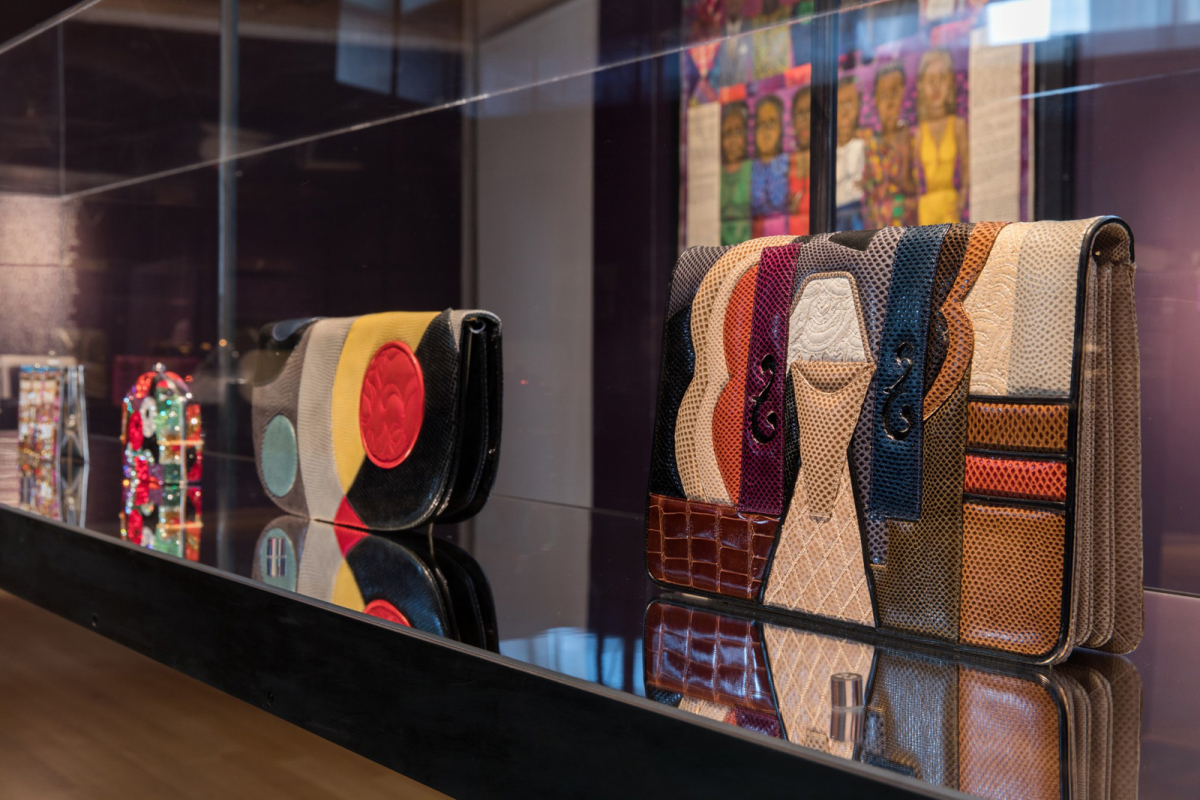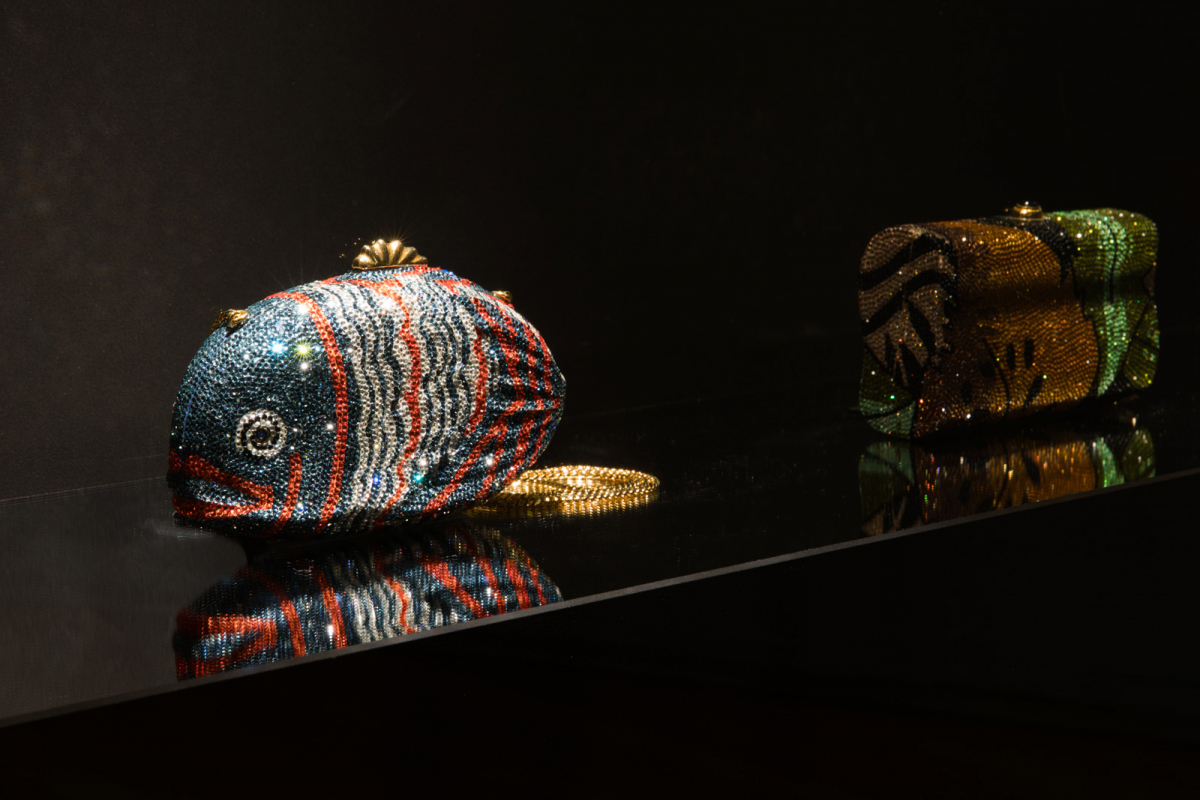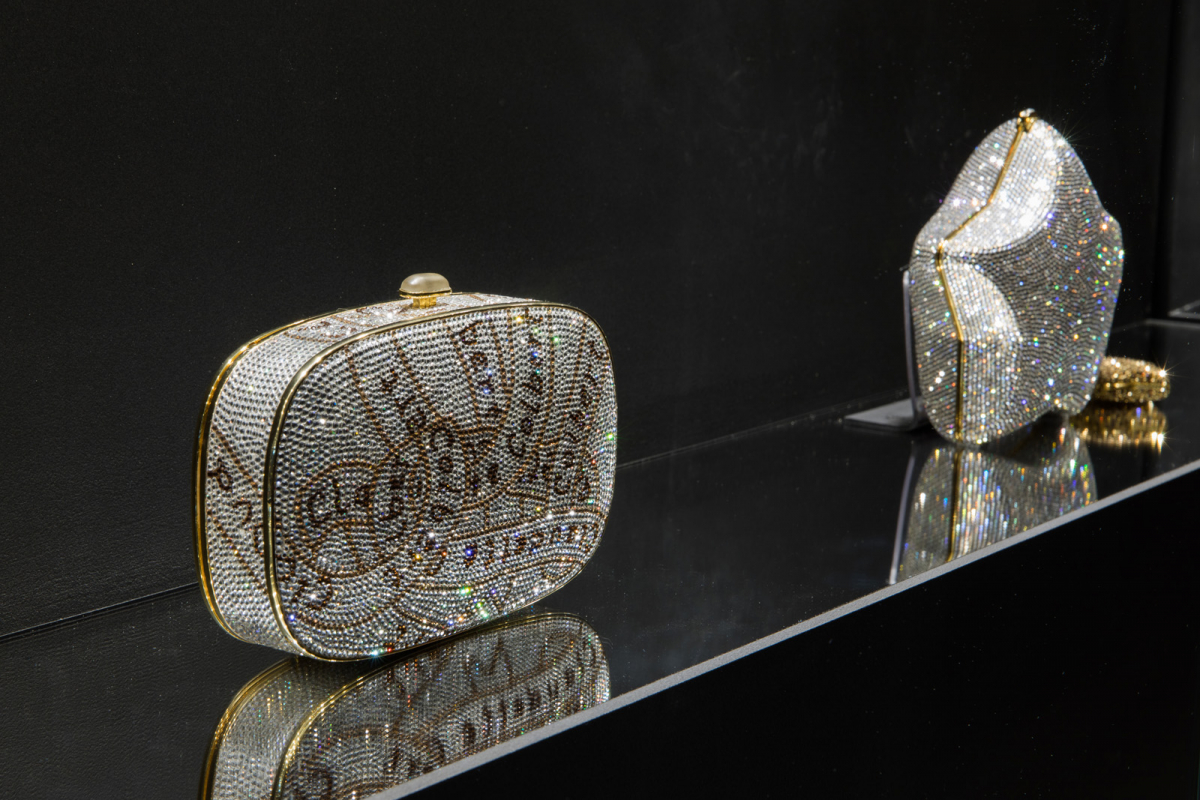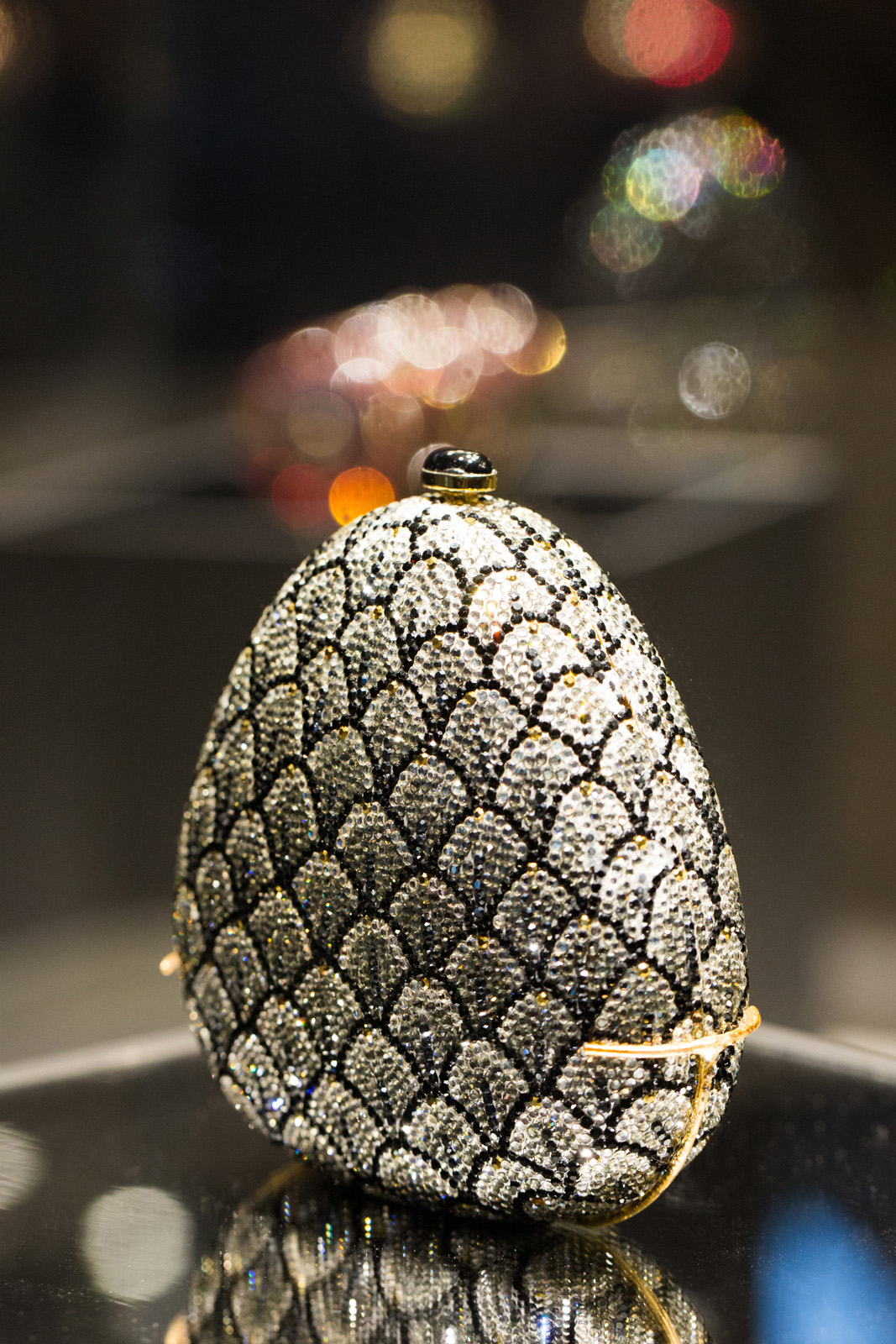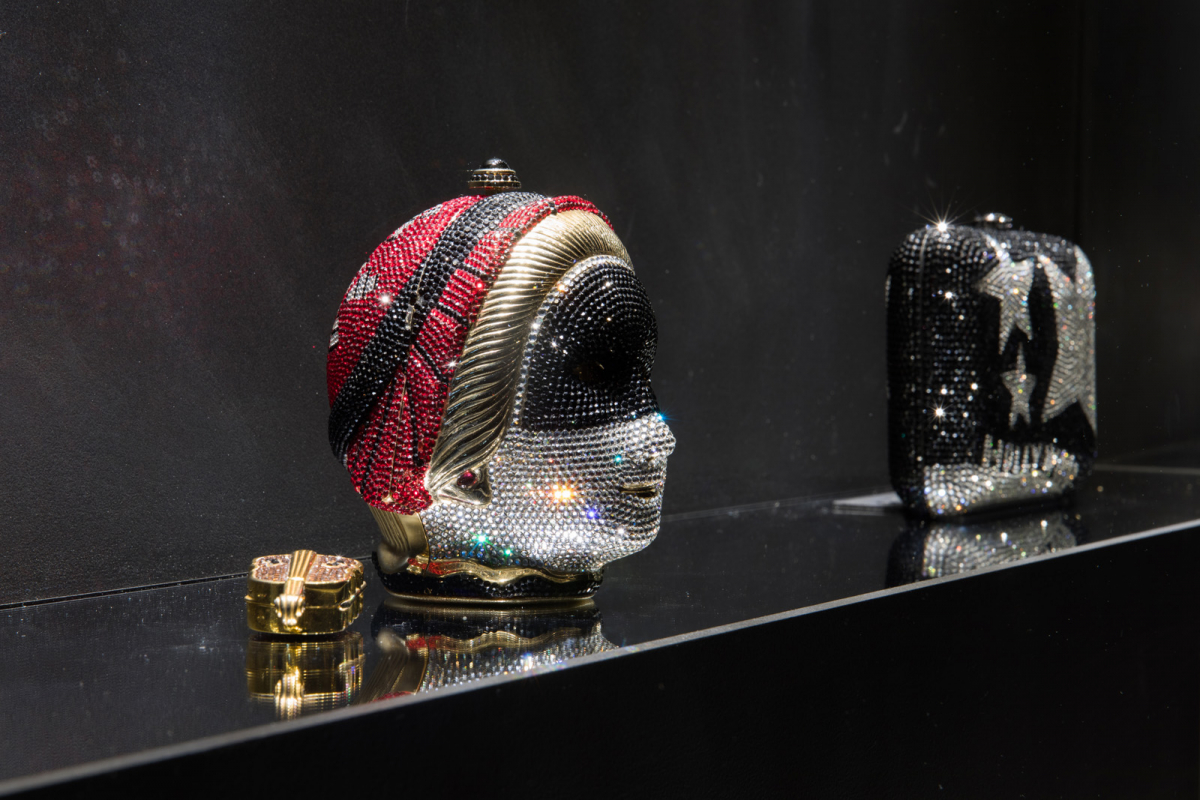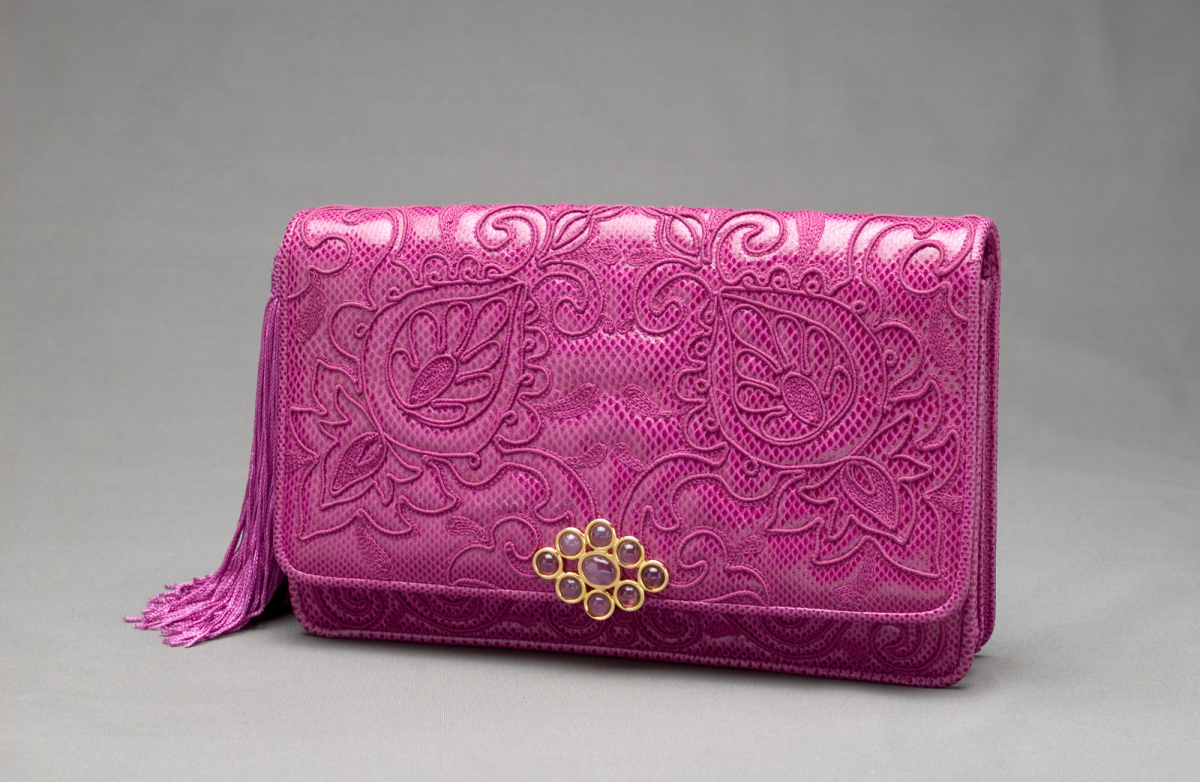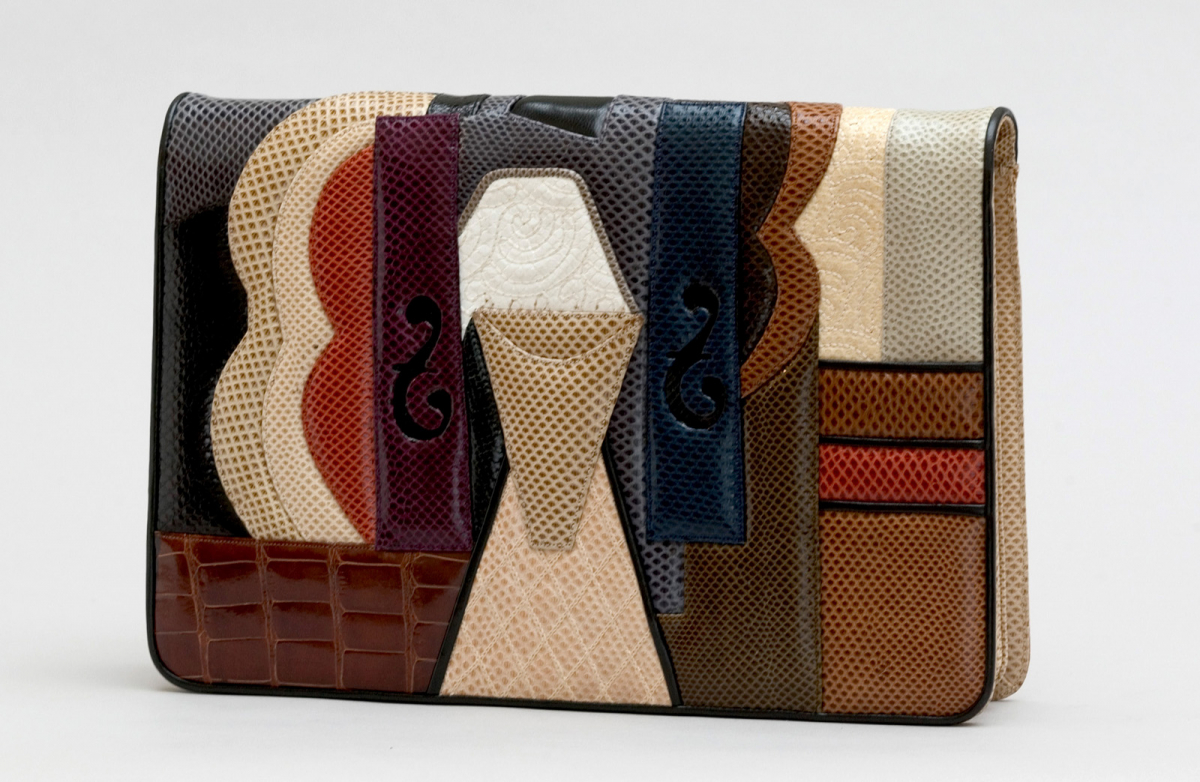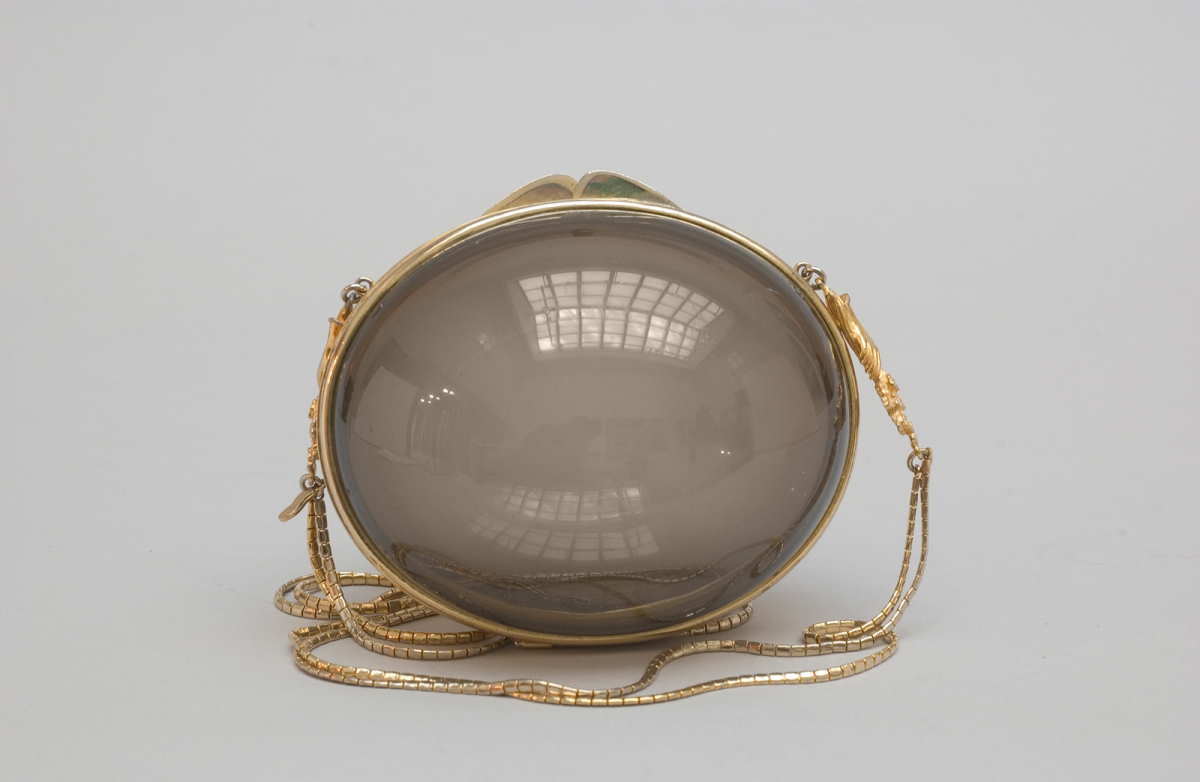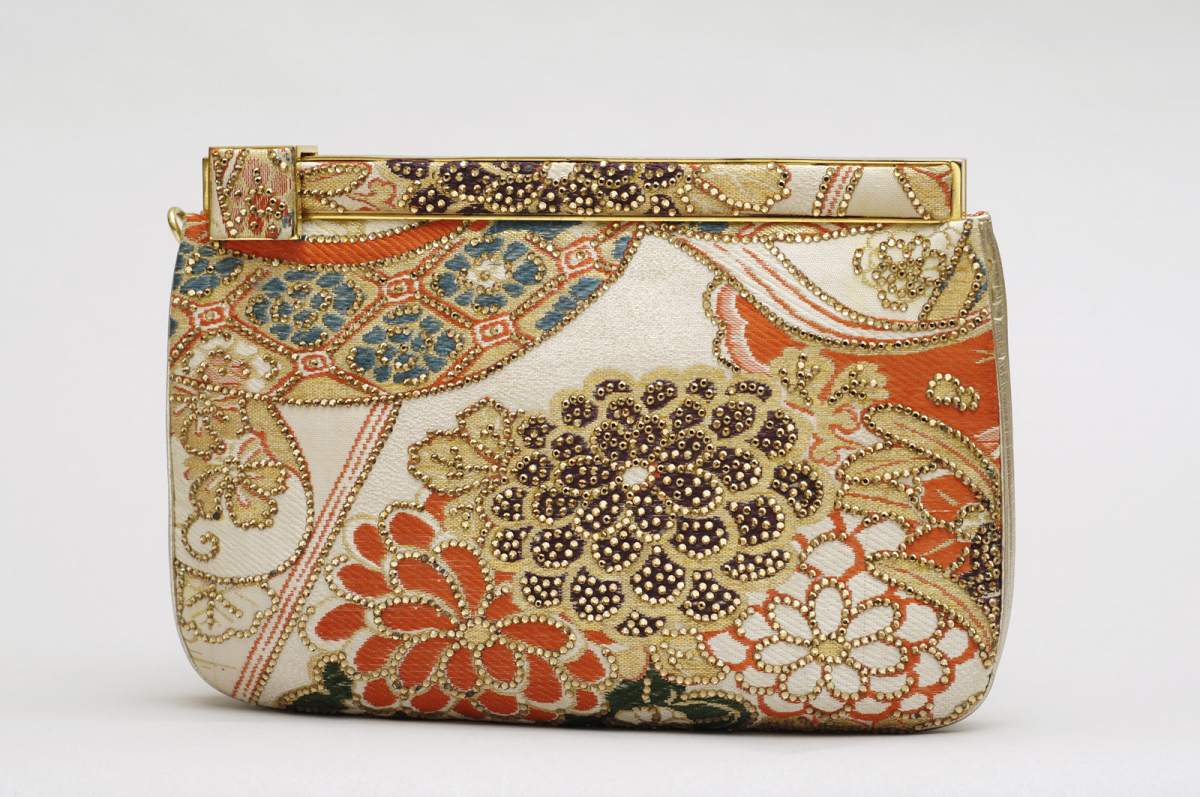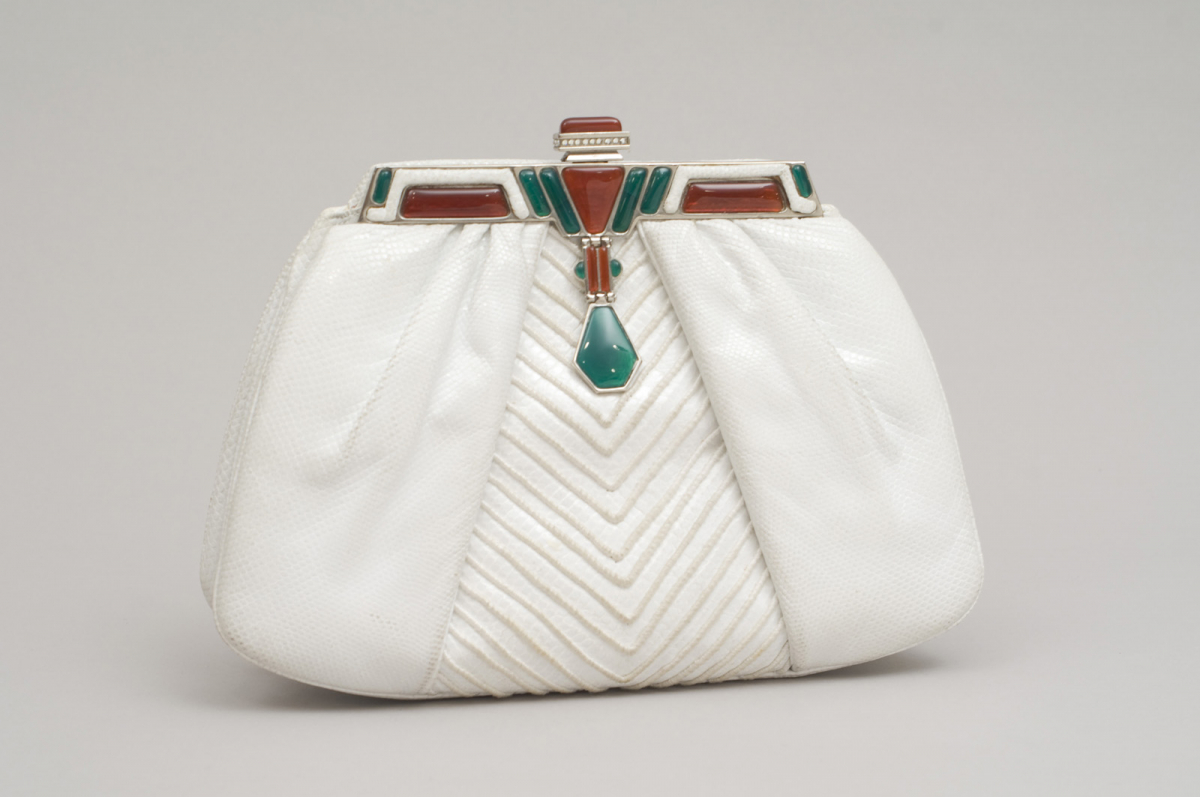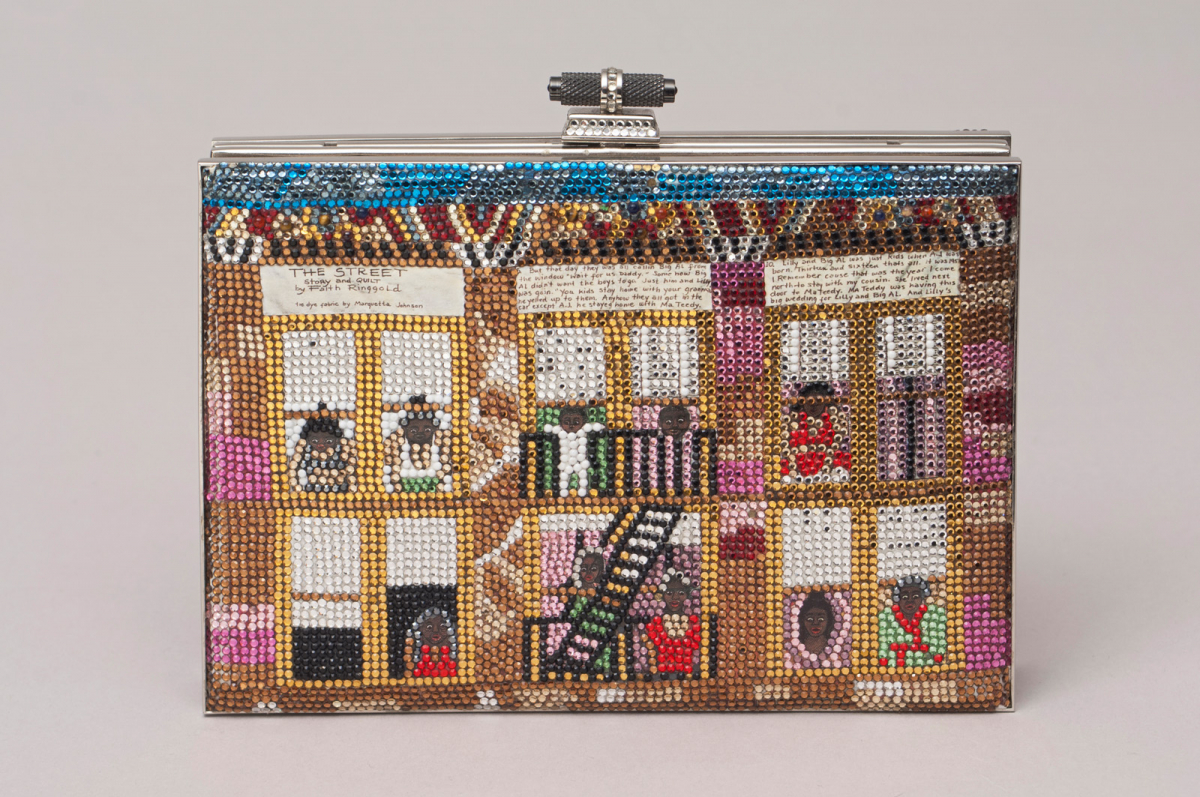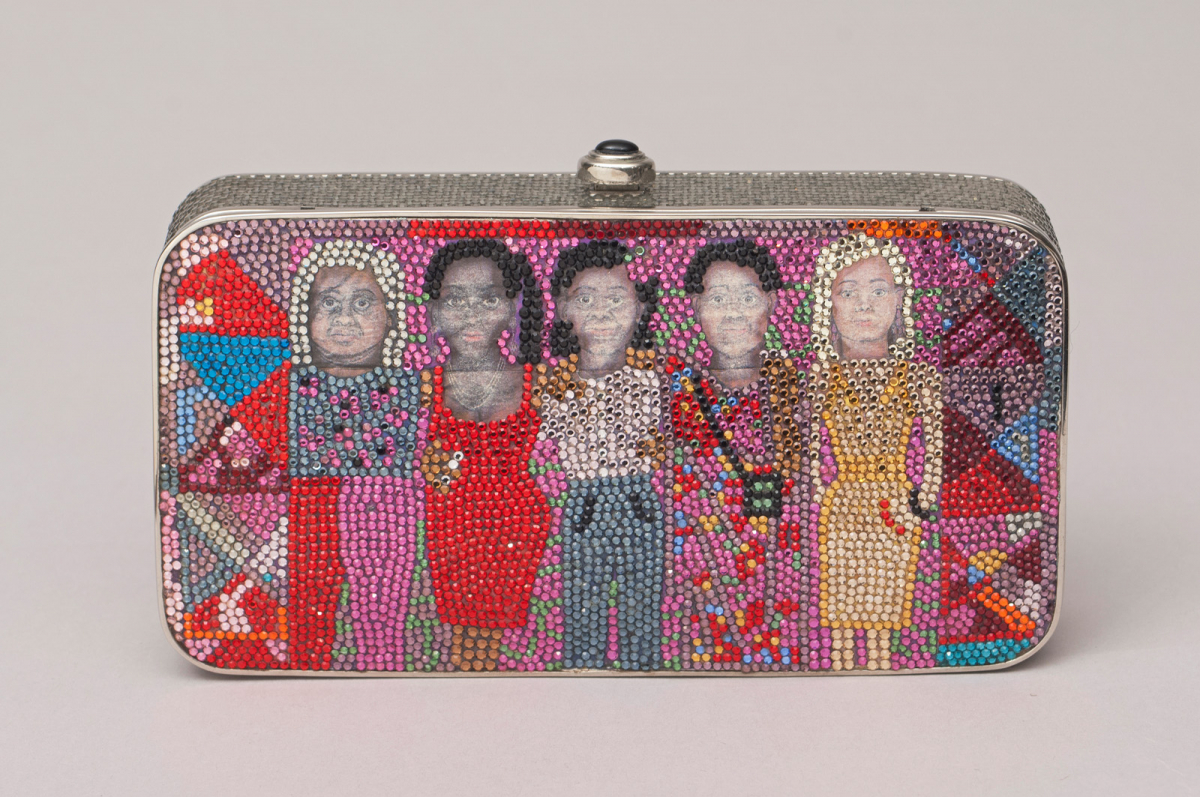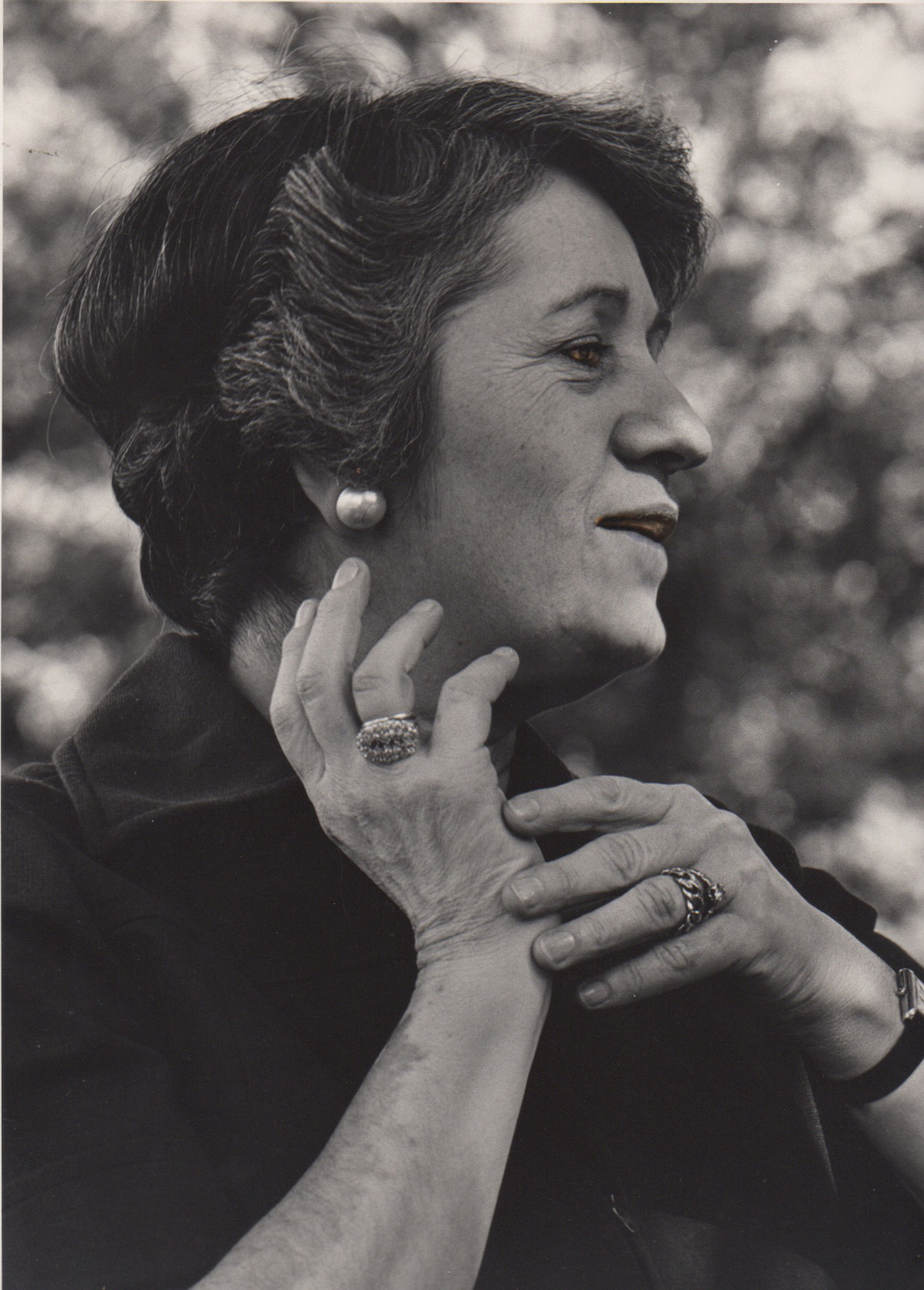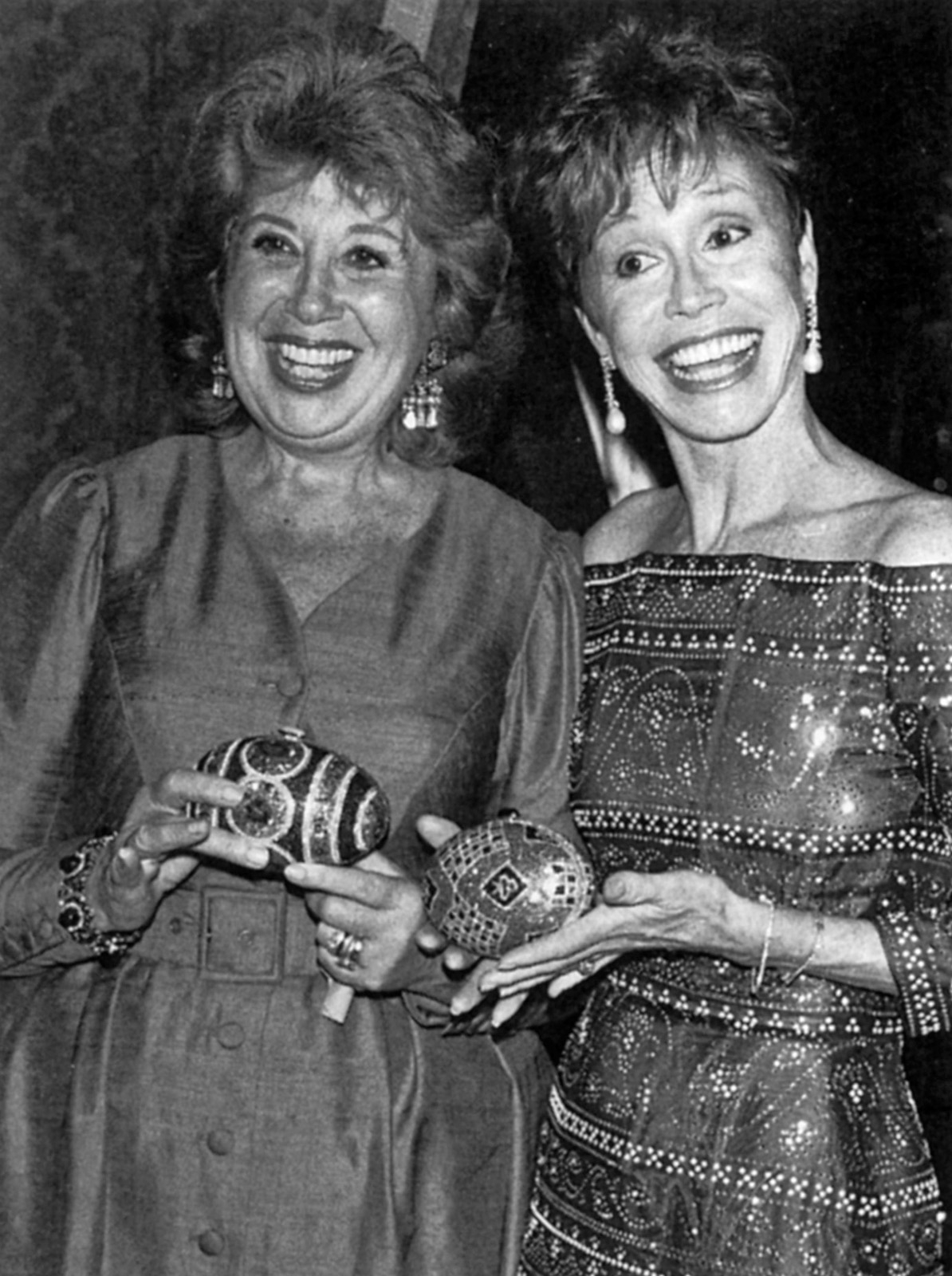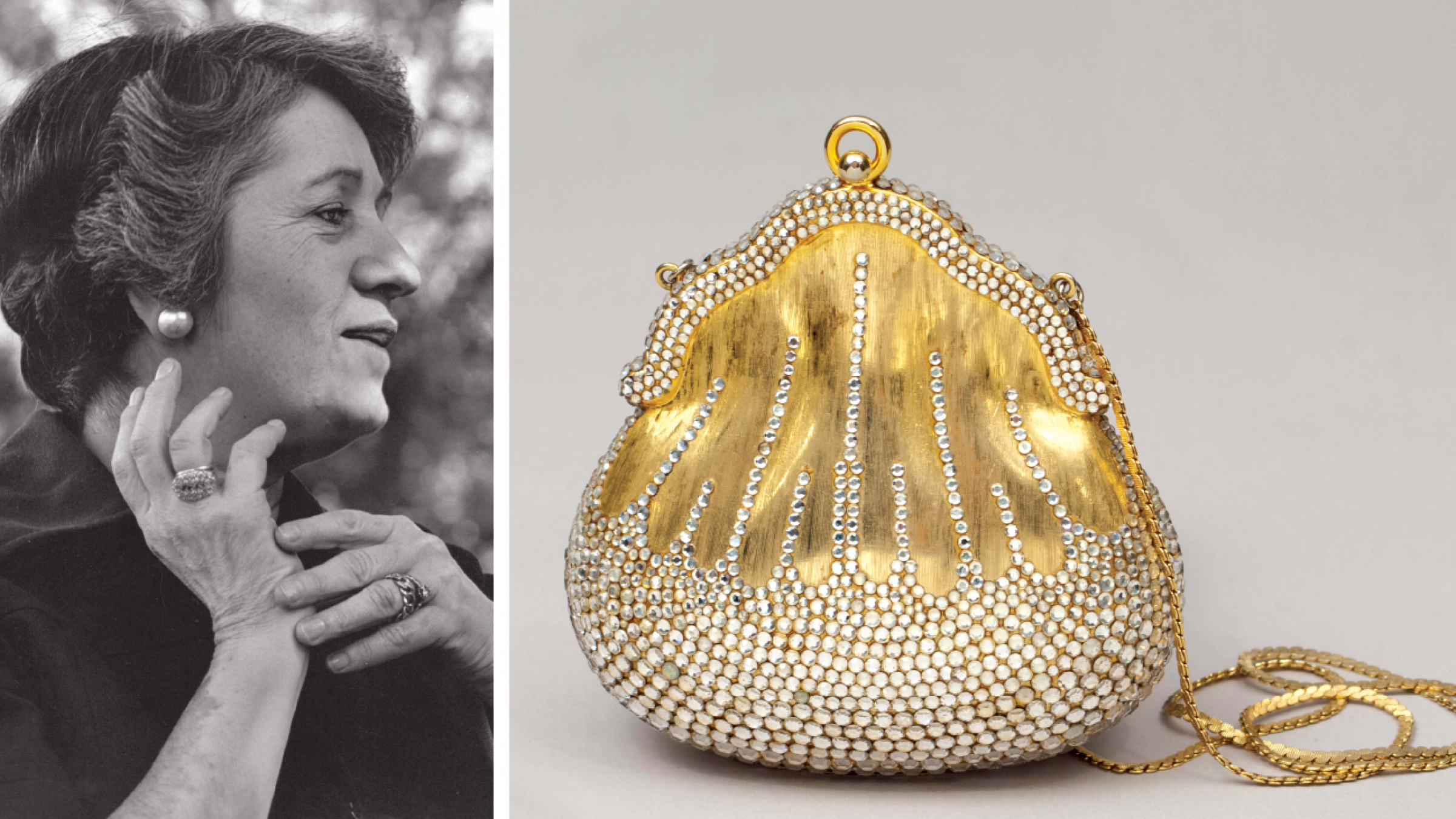
Judith Leiber spent sixty-five years in the handbag industry, from an apprentice in Budapest to the owner of an internationally renowned handbag company based in New York City. As the only female pattern-maker, and with the unusual ability to make a handbag from start to finish, Leiber brought a distinctly European training and skill set to the United States, where handbags were made with assembly-line skill division. This allowed her not only to succeed as a designer, but also to revolutionize the meaning of handbag craftsmanship for the American consumer.
Leiber’s handbags run the gamut from finely crafted leather pieces and textile-based bags, to the fantastical Swarovski crystal–encrusted creations for which she is most well known. Inspired by a life-long admiration of art, travel, and opera, Leiber’s bags include Art Deco–influenced hardware; materials such as Lucite and seashells; references to the artwork of Piet Mondrian, Georges Braque, and Sonia Delaunay; and collaboration with Faith Ringgold on a collection of handbags inspired by her quilts.
As Leiber’s reputation flourished, designers and suppliers sought her out, offering interesting materials, particularly textiles. Thus, many of her handbags are constructed with obis from Japan, Parsi ribbons from India, and fabrics from Iran and Africa. From the earliest days of her company, Leiber pushed the boundaries of handbag design—innovation that is epitomized by her famed sparkling minaudières, a technique that began as a solution to a damaged metal frame, and was then catalyzed by the design of her imaginative animal and food clutches to become fashion staples for First Ladies and celebrities alike.
Judith Leiber: Crafting a New York Story tells the tale of this illustrious craftswoman, designer, and businesswoman. The exhibition includes handbags that encompass the history of her eponymous company, which Leiber founded in 1963 at the age of forty-two, through 2004, when she designed her last handbag. Although biographical in nature, the exhibition also explores the gendered significance of the handbag in twentieth-century Western culture, and the centrality of immigrant entrepreneurship in the fabric of New York.
Judith Leiber: Crafting a New York Story is curated by Assistant Curator Samantha De Tillio, with the support of Curatorial Assistant and Project Manager Angelik Vizcarrondo-Laboy.
Leading support for Judith Leiber: Crafting a New York Story is provided by Marian and Rusty Burke and Michele and Marty Cohen. This exhibition was also made possible by the major support of the Marcy Syms and the Sy Syms Foundation and Donald and Barbara Tober. The Museum of Arts and Design gratefully acknowledges the support of Anita Durst, Alexandra Fairweather, the Hungary Initiatives Foundation, The Magyar Foundation of North America, Sharon Karmazin, the Leonard and Judy Lauder Fund, and Melissa Urfirer.
Contributing support for the exhibition’s education and public programs is provided by an anonymous donor, Sandye and Renee Berger, The Carpenter Family, and Fred and Susan Sanders.
Judith Leiber: Crafting a New York Story is part of The Art and Craft of Getting Dressed, a series of three exhibitions at the Museum of Arts and Design (MAD) this spring that embrace craftsmanship, cultural commentary, and critical thinking in fashion practices—from the couture to the conceptual—across multiple generations. In keeping with MAD’s dedication to investigating studio “process” in modern and contemporary art and craft, these exhibitions highlight how fashion, as an expanded field of craft, serves as a platform for artists and designers to explore ways of making that champion artistry, expressiveness, and social responsibility—from concept to product.
